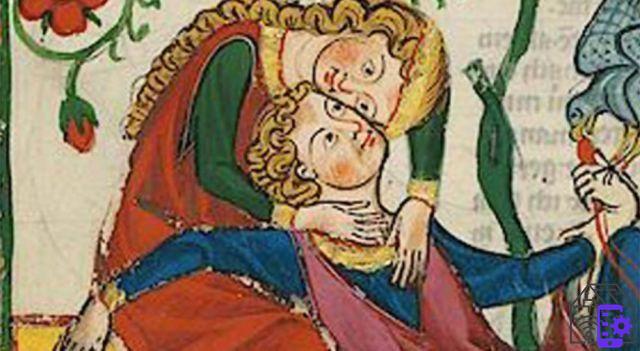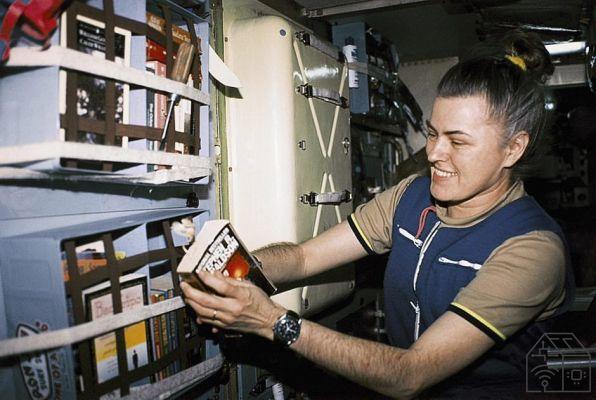
Our column "How has it changed" leads us to the discovery of truths that perhaps we have always known, but then we have forgotten. After all, technological progress goes so fast that new things become old within a few years. And this is as true for objects as it is for the habits associated with them. It may seem like a meaningless introduction, but it will all be clearer to you now that we tell you that today we are going to talk - or write - about how the letter has changed.
Quite a challenging mission. After all, when we talk about how a simple instrument like the letter has evolved, we end up facing the entire history of written communication. And it is not an easy task, especially considering how much communication between people has intensified with the arrival of the Internet and Social Networks. But we will make it. Indeed, we will try.
It all starts with love letters
Moved by curiosity, we searched on Google for “who wrote the first letter”, and the results are actually quite exhaustive. These include the so-called "First letter of John“, Written by the apostle around 100 AD and presumably addressed to Ephesus. As you can imagine, the text contains a number of important religious references, but the section that most attracted us is the commandment of love. "Whoever does not love remains in death", comments John. And it is clear that it refers to the love of the faithful for God, but we are quite sure that this concept can also be extended to the sentimental sphere of each of us.
Why are we talking to you about all this? Simply because many of us make a logical connection between the letter and love, which is not entirely wrong. We are not interested in the letters sent from one state to another, the long parchments - which were nothing more than letters - with wax seals and much more. What we all remember about this form of written communication are the stories of our grandmothers, who told us about how nice it was to receive love letters. And that's why we want to start this story from Abelardo and Eloisa, considered somewhat the fathers of epistolary novels.

We are in 1116, in Brittany. Pietro Abelardo is a professor of logic and theology at the school of Sainte Généviève, who falls madly in love with one of his very young students, Eloisa. Between the two a story is born that mixes passion and love, as we read in the girl's letters: “under the pretext of the lessons we abandoned ourselves completely to love; the study of letters offered us those secret corners that passion prefers ". But like every love story of the time, this one too has a dramatic twist. Eloisa becomes pregnant with her, and Abelard can only marry her in secret because he is a cleric and he is not allowed to give in to marriage. The two are thus forced to separate, which irritates the girl's family and leads to the emasculation of the man in a nasty organized aggression against her.
Forced into separation, Abelardo and Eloisa have kept their relationship alive by writing dozens and dozens of letters. And so, all this tragedy turns into one of the most famous epistolary novels in history. A collection that shows us how love was the first driving force behind the writing of the epistles.
 Friendly Fox - Set of modern letter paper with ...
Friendly Fox - Set of modern letter paper with ...
- Beautiful letter paper: colorful writing paper immediately puts you in a good mood and, thanks to modern triangles, ...
- Sufficient space: the letter set consists of 20 sheets of DIN A4 paper and 20 matching envelopes (C6). There...
- There is mail for you: a beautiful letter paper with a motif, because letter correspondence is back in fashion ....
How the letter has changed: from paper to email
Let's make an incredible time jump from Abelard and Eloisa to the twentieth century, so that we can understand when and how the letter has changed. And we went from paper to digital support for all our personal communications, including love ones. Until the early 1900s, as you know, letters were still written with a fountain pen, a tool of relative convenience. The same Judge László, Hungarian journalist who invented the ballpoint pen, he complained several times about the time lost in filling the pen with ink. And so, together with his chemical brother György, he developed an ink capable of drying even before settling on the sheet. Thus the BIC was born in 1938, an invention that certainly made writing letters easier.
For five decades, the letter has been the perfect tool for communicating between distant people: lovers, professional collaborators, relatives. Together with the telephone, which undoubtedly required a more expensive investment, the epistle was the most widespread form of communication in the twentieth century. At least until thee-mail, an extraordinarily powerful tool, which made it possible to reduce the long waiting times between the sending and the arrival of a message. For the uninitiated, the idea of being able to exchange communications through the computer is due to Ray Tomlinson, an American programmer who had the brilliant intuition of designing a program for sending files and documents from one PC to another. Until then, in fact, it was only possible to share messages on the same machine, which made communication not too effective.
And so, in 1971 Tomlinson sent the first email in history. The text? "QWERTYUIOP". The recipient? We do not know. But what we do know is that this American gentleman was also the @'s dad, which has now become an essential element for e-mail. Tomlinson was the first ever to connect his computer to a mailbox using the snail symbol, perhaps without even thinking that this habit would remain so for the following decades. But the American programmer was not alone in making his contribution to electronic mail. In 1978 Shiva Ayyadurai built an email program for the University of New Jersey School of Medicine and Dentistry.

Now, whose paternity really is we are relatively interested in. What matters is that email has upset the world of communication, making the letter even obsolete. Just think that in 1991 astronauts Shannon Lucid and James C. Adamson sent an email from the Atlantis shuttle to Earth. The text went something like this: “Hello Earth! Greetings from the crew of the STS-43. This is the first AppleLink from space. We are having fun and we would like you to be here. Hasta la vista, baby… we'll be back! “. Let's say we are quite convinced that this is enough to help you understand how the letter has changed over the centuries, going from a simple parchment to an email sent to space.
L'sms, a modern lettera
Let's face it: with the arrival of the email, the letter took a back seat. But with the spread of the SMS, we can say that it has even passed into the fifth or sixth floor. We do not dare to say that it has been forgotten, but we are very close to it. Messages are, to all intents and purposes, the letters of our century. Shorter, more colorful and faster. But still letters, or almost. After all, if before we used to write a letter once a month - or once every time it arrived -, now we can even write every day. Every minute. All the seconds.
But to whom do we owe this luck? TO Matti Makkonen, a Nokia engineer who had the brilliant idea of combining text messaging with mobile technology. It was, in effect, the first SMS project, which was later developed further by Friedhelm Hillebrand, the engineer who gave the text messages the form of 160 characters. Enough to send a message to someone quickly and practically. Maybe not all of you will remember this, but the character limit for SMS still existed in the late XNUMXs. And here we all juggled with the gift of synthesis, or with the most incredible solutions from a graphic point of view. Write one word in capital letters and one in lowercase to save space, or abbreviate words such as "anyway" to "cmq" and so on.
The Millennials are the generation that better than any other has followed the evolution of SMS, suffering the pains of character limits - and obviating them with the rings to say "I think of you" -. And then enjoying the almost unlimited characters and the speed of communication of WhatsApp. At the same time, our grandparents told us what it meant to write a letter and look forward to an answer. A sensation that today we cannot even imagine. A message arrives just a second after it has been sent, but it takes a lot of romance out of our communications. We know how the letter has changed, but what we perhaps ignore is how much this has really upset our communications, for better or for worse. Have you ever thought about it?
Discount SAMSUNG Smartphone Galaxy S20 FE 5G, Display 6.5" Super...
SAMSUNG Smartphone Galaxy S20 FE 5G, Display 6.5" Super...
- Galaxy S20 FE 5G boasts bold colors and eye-catching designs. The elegant back made with ...
- The Galaxy S20 FE 5G is bold inside and out. The 6,5 "FHD + Infinity-O display and the frequency of ...
- Immortalize your important moments with the professional triple camera, see further with the 30x Space Zoom and ...




















![[Review] Samsung Powerbot VR7000: the robot vacuum cleaner from Star Wars](/images/posts/6bc44de38605b5c0fa12661febb1f8af-0.jpg)





